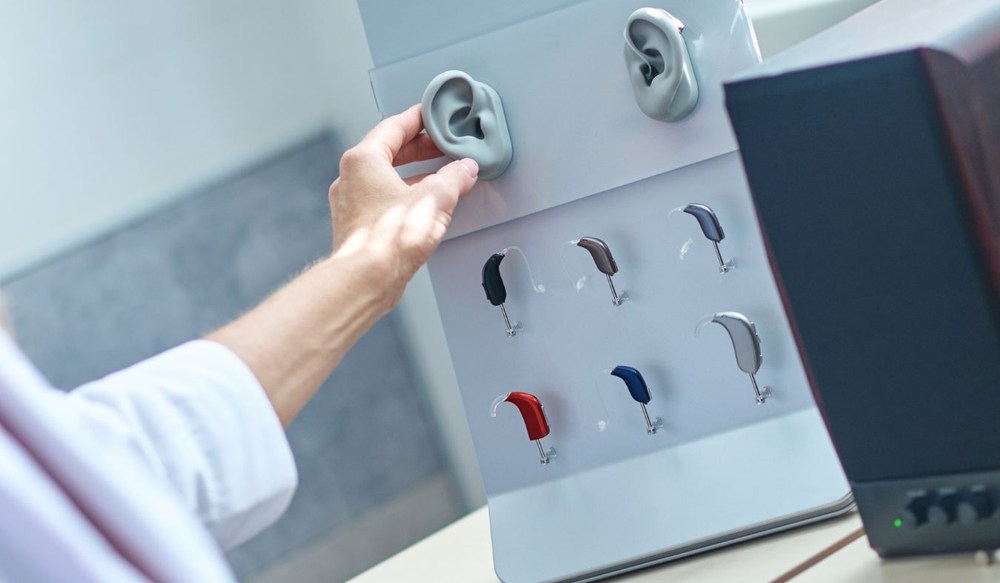Innovations in Hearing Aid Battery Technology
Battery technology has come a long way in recent years, and these

By: admin | July 24, 2024
Understanding your hearing test results can feel a bit confusing if you’ve never had one explained to you before. You’re handed a sheet filled with graphs, numbers and terms that are new to you, all representing your hearing health. It’s normal to feel a whirlwind of emotions – relief that there’s an explanation for the difficulties you’ve been facing, but also some confusion about what to do next. Comprehending these results is the first step in planning your path forward and making informed decisions about your treatment options. This article will help you make sense of this important stage in managing your hearing loss.
Ever wondered what those lines and symbols on your audiogram mean? It’s more than just a piece of paper; it’s a key to understanding your hearing health. Your audiogram is essentially a graph that shows the softest sounds you can hear at different pitches or frequencies. The vertical axis represents the volume of sounds, measured in decibels (dB), while the horizontal axis shows the frequency of sounds, measured in Hertz (Hz).
Familiarizing yourself with the terms frequency and intensity can be beneficial to your hearing health management. Frequency refers to the pitch of a sound, measured in Hertz (Hz), while intensity is the loudness of a sound, measured in decibels (dB). These two aspects are vital in determining how well you can hear and interpret sounds around you.
To simplify this, think of frequency as the type of sound you’re trying to hear – for instance, a low frequency like a dog’s bark or a high frequency like a bird’s song. Intensity, on the other hand, is how loud or soft these sounds are. By knowing your hearing capabilities at different frequencies and intensities, you and your audiologist can better strategize your hearing care plan.
Now, let’s make sense of those test results you’ve received. These results are an important tool for your professional to understand the specifics of your hearing loss.
The test results provide detailed information about how well you can hear at different volumes and frequencies. It’s important to understand that these results are not a verdict but rather a guide for the next steps in managing your hearing loss. Your specialist will explain these details to you and together, you’ll plan the best course of action. Rest assured, understanding these test results is a significant step towards improving your hearing health.
Let’s now discuss the difference between bilateral and unilateral hearing loss. Bilateral hearing loss refers to hearing loss in both ears, while unilateral means the loss is in one ear only. Knowing whether your hearing loss is bilateral or unilateral is important as it can significantly impact your treatment options and overall quality of life. For instance, with bilateral hearing loss, using two hearing aids may provide a more balanced and natural sound experience. On the other hand, if you have unilateral hearing loss, strategies might include positioning yourself strategically in conversations or potentially using a single hearing aid. By understanding this aspect of your condition, you can work with your specialist to find the most effective solutions for your individual needs.
Does age influence your hearing test results? The answer is yes, it can. As we grow older, our bodies naturally go through changes and our hearing is no exception. Age-related hearing loss, also known as presbycusis, is a common type of hearing loss that affects older adults. It’s caused by the gradual wear and tear on your ears over time. Understanding how age affects your hearing can help you make sense of your test results.
Your audiologist will take into account your age when analyzing your test results. If you’re experiencing symptoms of presbycusis, like difficulty understanding speech in noisy environments or trouble hearing high-pitched sounds, this will be reflected in your results. Armed with this knowledge, you and your specialist can work together to find the most suitable treatment options for managing your age-related hearing loss.
Noise-induced hearing loss results from exposure to loud sounds. This can occur due to a single, intense noise like an explosion or more commonly, through prolonged exposure to high noise levels, like those found in industrial workplaces, concerts or even daily use of headphones at high volumes.
The human ear contains delicate hair cells within the cochlea that are responsible for transmitting sound signals to the brain. When exposed to loud noises, these hair cells can become damaged or destroyed. Unlike other cells in the body, these hair cells do not regenerate, making the hearing loss permanent. The severity of NIHL can vary; some people might experience a slight reduction in hearing, while others may suffer from significant hearing loss.
One of the key challenges with NIHL is that it often develops gradually, making it difficult for individuals to notice the deterioration in their hearing. Early signs may include difficulty understanding speech in noisy environments, a ringing or buzzing sound in the ears (tinnitus) or needing to turn up the volume on electronic devices. Prevention is crucial when it comes to NIHL. Using ear protection in noisy environments, limiting the duration of exposure to loud sounds and keeping the volume at safe levels when using headphones can help protect your hearing.
The next step in your path to better hearing is understanding the various treatment options available to you. It’s like stepping into a world filled with possibilities, each one tailored to improve your hearing health and overall quality of life.
After your hearing test has been conducted and the results have been discussed, the next crucial step is selecting the right hearing aids with the help of your audiologist. With a comprehensive understanding of your hearing needs, your audiologist will guide you through the available hearing aid options tailored to your specific hearing profile.
Modern hearing aids come in a variety of styles designed to suit different preferences and levels of hearing loss. Some are designed to be nearly invisible, fitting discreetly inside the ear, while others offer more robust features for those with more severe hearing needs. During this process, your audiologist will explain the benefits and considerations of each style, ensuring you choose the one that fits comfortably and meets your aesthetic preferences.
In addition to styles, hearing aids come with a range of advanced features designed to enhance your hearing experience. Noise reduction technology helps to minimize background noise in loud environments, making it easier to focus on conversations. Directional microphones can be particularly beneficial, as they focus on sounds coming from in front of you while reducing sounds from other directions, which is useful in social settings.
Connectivity features are another important aspect to consider. Many modern hearing aids can connect to smartphones and other devices via Bluetooth, allowing you to stream audio directly to your hearing aids. This can be particularly useful for phone calls, listening to music or watching TV. Additionally, some hearing aids come with rechargeable batteries, eliminating the need for frequent battery changes and making them more convenient to use.
Your audiologist will help you understand how these features work and which ones are most beneficial for your lifestyle and hearing needs. They will also ensure that your hearing aids are properly fitted and programmed to match your hearing profile. This personalized approach ensures that you get the most out of your hearing aids, enhancing your ability to communicate and enjoy the sounds of life.
During your hearing aid fitting appointment, you’ll experience a thorough and personalized process designed to ensure your new devices are comfortable and effective. After selecting your hearing aids, this appointment is essential to optimize their performance based on your specific needs and preferences.
First, the audiologist will fit the hearing aids to your ears. This involves selecting the appropriate size and style of earpieces to ensure a comfortable and secure fit. The audiologist will make any necessary adjustments to the physical components, like trimming or shaping the earpieces, to achieve the best possible fit.
Next, the audiologist will program your hearing aids using specialized software. This step involves adjusting the settings to match your specific hearing loss profile. The goal is to amplify the frequencies where you have the most difficulty hearing while ensuring that sounds remain clear and natural. The audiologist will conduct a series of tests to fine-tune the settings, asking you to listen to different sounds or words and provide feedback on how well you can hear them.
Your audiologist will also teach you how to use and care for your new hearing aids. They will demonstrate how to insert and remove the devices, change the batteries or recharge them, clean and maintain the earpieces and adjust the volume or other settings. Understanding these basics is crucial for getting the most out of your hearing aids and ensuring their longevity.
Finally, you will have the opportunity to ask any questions and address any concerns you may have. The audiologist will provide support throughout this process and schedule follow-up appointments to monitor your progress and make any necessary adjustments.
Overall, your hearing aid fitting appointment is a collaborative process that aims to provide you with the best possible hearing experience, allowing you to enjoy improved communication and a better quality of life.
At ChEARS Hearing Center, our team of professionals is here to guide you every step of the way, providing expert advice and personalized solutions based on your unique needs. Whether you’re just starting your treatment plan or looking for ways to manage existing hearing loss, we’re committed to helping you enhance your quality of life through improved hearing.
If you’ve recently noticed issues with your hearing and are wondering what comes next, don’t hesitate to reach out. You can contact us at our San Diego location by calling (619) 717-2601. We’ll help make sense of those graphs and numbers, discuss potential treatment options tailored specifically for you and answer any questions that might be lingering in your mind post-diagnosis.

Battery technology has come a long way in recent years, and these
By: admin | November 18, 2025

Hearing care has changed significantly in recent years, going beyond the
By: admin | September 24, 2025

Hearing aids have come a long way from being simple sound amplifiers –
By: admin | May 23, 2025
